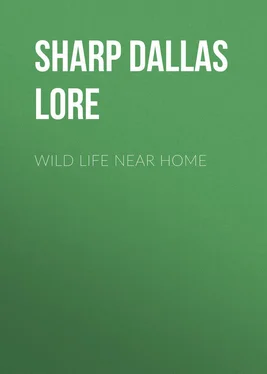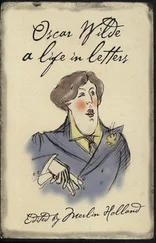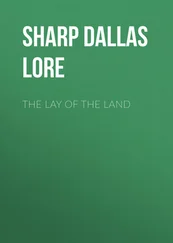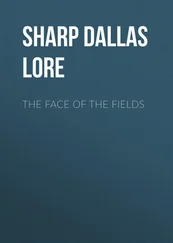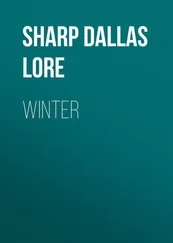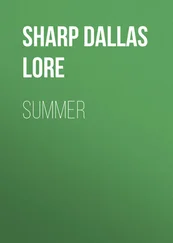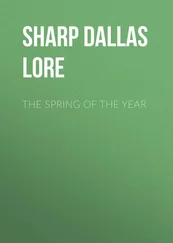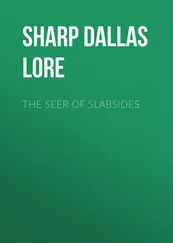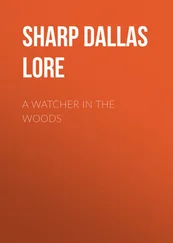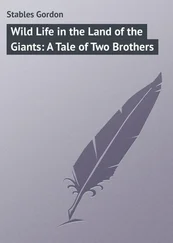Dallas Sharp - Wild Life Near Home
Здесь есть возможность читать онлайн «Dallas Sharp - Wild Life Near Home» — ознакомительный отрывок электронной книги совершенно бесплатно, а после прочтения отрывка купить полную версию. В некоторых случаях можно слушать аудио, скачать через торрент в формате fb2 и присутствует краткое содержание. Жанр: Природа и животные, foreign_antique, foreign_prose, на английском языке. Описание произведения, (предисловие) а так же отзывы посетителей доступны на портале библиотеки ЛибКат.
- Название:Wild Life Near Home
- Автор:
- Жанр:
- Год:неизвестен
- ISBN:нет данных
- Рейтинг книги:3 / 5. Голосов: 1
-
Избранное:Добавить в избранное
- Отзывы:
-
Ваша оценка:
- 60
- 1
- 2
- 3
- 4
- 5
Wild Life Near Home: краткое содержание, описание и аннотация
Предлагаем к чтению аннотацию, описание, краткое содержание или предисловие (зависит от того, что написал сам автор книги «Wild Life Near Home»). Если вы не нашли необходимую информацию о книге — напишите в комментариях, мы постараемся отыскать её.
Wild Life Near Home — читать онлайн ознакомительный отрывок
Ниже представлен текст книги, разбитый по страницам. Система сохранения места последней прочитанной страницы, позволяет с удобством читать онлайн бесплатно книгу «Wild Life Near Home», без необходимости каждый раз заново искать на чём Вы остановились. Поставьте закладку, и сможете в любой момент перейти на страницу, на которой закончили чтение.
Интервал:
Закладка:
Five miles is pure fun to a boy who has run barefoot every one of his fifteen summers; so I rolled up my trousers, tightened my belt, and bent away for Shiloh at an easy dog-trot that, even yet, I believe I could keep up for half a day.
There was not a glimmer in the east when I started. I had covered three miles, and was entering a long stretch of sprout-land when the dawn began. The road was dusty, and the dew-laid powder puffed beneath the soft, swift pats of my feet. Things began to stand out with some distinctness now as the pale light brightened. No wagons had been along, and every mark of the night was plain. Here and there were broad, ragged-edged bands across the road – the trails of the wandering box-turtles. I saw the smooth, waving channel left by a snake that had just gone across. Here and there were bunches of rabbit tracks, and every little while appeared large spots in the road, where some bird had been dusting itself.
Suddenly I made a sharp turn, and almost ran over a whippoorwill concealed in a very cloud of dust which she was flirting up with her wings. This explained the spots back along the road. The bird flew up and settled a few yards ahead of me, and took another hasty dip. This she kept up for nearly a quarter of a mile.
The road was alive with whippoorwills. It was their bathing-hour, and playtime, too. The serious business of the night was done; they had hunted through the first hours, and now it was time to be social. The light was coming rapidly, and so was bedtime; but they called and capered about me, playing away the narrowing night to the very edge of day.
On my return, an hour later, the sun was looking over the tops of the "cut-offs," but he did not see a whippoorwill. They were all roosting lengthwise upon the logs and stumps back among the bushes.
These unnatural, unbirdlike habits of the whippoorwill are matched by the appearance of the bird. The first time one sees a whippoorwill he questions whether its shape and color are the result of its nocturnal life or whether it took to the night to hide its unbeautiful self from the gaze of the day.
It has ridiculously short legs, a mere point of a bill, and a bristled, head-dividing gap that would shame a frog. Looked at in the daylight, its color, too, is a meaningless mixture, as unreal and half done as the rest of the creature. But we should not be so hasty in our judgment. There is design in all things in nature; utility is the first law of creation: and the discovery of plan and purpose is the highest appreciation of beauty.
The whippoorwill's dress must be criticized from the view-point of its usefulness to the bird; then it becomes one of the most exquisitely artistic garments worn. Compare it with that of any other bird, and your wonder at it grows. Another such blending of light and shadow cannot be found. The night herself seems to have woven this robe out of warp from the strands of early dawn and of woof spun from the twilight.
The whippoorwill cannot change the color of its dress with the passing clouds, nor match it with the light green of unfolding leaves and the deep bronze of old tree-trunks, as the chameleon can. But the bird has no need of such control. It is always in harmony with its surroundings. In the falling twilight it seems a shadow among the shadows; in the breaking dawn it melts into the gray half-light, a phantom; at midnight it is only an echo in the dark; and at noontime you would pass the creature for a mossy knot, as it squats close to a limb or rail, sitting lengthwise, unlike any bird of the light.
We need not expect a bird of such irregular habits as the whippoorwill to have the normal instincts of birds, even with regard to its offspring. A bird given to roaming about at night, the companion of toads and bats and spooks, is not one that can be trusted to bring up young. You cannot count much on the domesticity of a bird that flits around with the shadows and fills the night with doleful, spellbinding cries.
The nest of the whippoorwill is the bare ground, together with whatever leaves, pebbles, or bits of wood happen to be under the eggs when they are laid. I found a nest once by the side of a log in the woods, and by rarest good fortune missed putting my foot upon the eggs. Here there was no attempt at nest-building, not even a depression in the earth. There were two of the eggs, – the usual number, – long and creamy white, with mingled markings of lavender and reddish brown. Here, upon the log, one of the birds dozed away the day, while the mate on the nest brooded and slept till the gloaming.
The effect of this erratic life in the forest glooms and under the cover of night has been to make the whippoorwill careless of her home and negligent of her young. She has become a creature of omen, weird and wakeful, lingering behind the time of superstition to keep myths moving in our scanty groves and mystery still stirring through the dark rooms of the night.
THE PINE-TREE SWIFT
In any large museum you may see the fossil skeletons, or the casts of the skeletons, of those mammoth saurians of the Mesozoic Age. But you can go into the pine barrens any bright summer day and capture for yourself a real live saurian. The gloom of the pines is the lingering twilight of that far-off time, and the pine-tree lizard, or swift, is the lineal descendant of those reptile monsters who ruled the seas and the dry land before man was.
Throughout southern New Jersey the pine-tree swifts abound. The worm-fences, rail-piles, bridges, stone-heaps, and, above all, the pine-trees are alive with them. They are the true children of the pines, looking so like a very part of the trees that it seems they must have been made by snipping off the pitch-pines' scaly twigs and giving legs to them. They are the aborigines, the primitive people of the barrens; and it is to the lean, sandy barrens you must go if you would see the swifts at home.
In these wide, silent wastes, where there are miles of scrub-pine without a clearing, where the blue, hazy air is laden with the odor of resin, where the soft glooms are mingled with softer, shyer lights, the swifts seem what they actually are – creatures of another, earlier world. When one darts over your foot and scurries up a tree to watch you, it is easy to imagine other antediluvian shapes moving in the deeper shadows beyond. How they rustle the leaves and scratch the rough pine bark! They hurry from under your feet and peek around the tree-trunks into your face, their nails and scales scraping, while they themselves remain almost invisible on the deep browns of the pines; and if you are inclined to be at all nervous, you will start and shiver.
The uncanny name "lizard" is partly accountable for our unpleasant feelings toward this really intelligent and interesting little beast. If he were more widely known as "swift," Sceloporus would be less detested. The z in "lizard" adds a creepy, crawly, sinister something to the name which even the wretched word "snake" does not suggest. "Swift," the common name in some localities, is certainly more pleasing, and, at the same time, quite accurately descriptive.
There is nothing deadly nor vicious, nor yet unlovely, about the swift, unless some may hate his reptile form and his scales. But he is strangely dreaded. The mere mention of him is enough to stampede a Sunday-school picnic. I know good people who kill every swift they meet, under the queer religious delusion that they are lopping off a limb of Satan. "All reptiles are cursed," one such zealot declared to me, "and man is to bruise their heads." The good book of nature was not much read, evidently, by this student of the other Good Book.
The swift is absolutely harmless. He is without fang, sting, or evil charm. He is not exactly orthodox, for he has a third eye in the top of his head, the scientists tell us; but that eye is entirely hidden. It cannot bind nor leer, like Medusa. Otherwise the swift is a perfectly normal little creature, about six inches long from tip to tip, quick of foot, scaly, friendly, wonderfully colored in undulating browns and blues, and looking, on the whole, like a pretty little Noah's-ark alligator.
Читать дальшеИнтервал:
Закладка:
Похожие книги на «Wild Life Near Home»
Представляем Вашему вниманию похожие книги на «Wild Life Near Home» списком для выбора. Мы отобрали схожую по названию и смыслу литературу в надежде предоставить читателям больше вариантов отыскать новые, интересные, ещё непрочитанные произведения.
Обсуждение, отзывы о книге «Wild Life Near Home» и просто собственные мнения читателей. Оставьте ваши комментарии, напишите, что Вы думаете о произведении, его смысле или главных героях. Укажите что конкретно понравилось, а что нет, и почему Вы так считаете.
